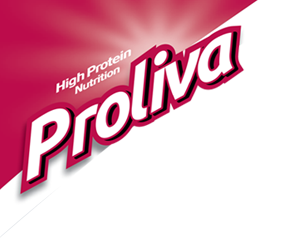-
Macro-nutrient requirements for diabetics
27.06.2018MACRONUTRIENT COMPOSITION
2.4.1 Fat:
Amount. There is general agreement that the type of fat consumed is more important than the quantity (generally 30% to 40% of total calories). Trans fats from partially hydrogenated oil should be eliminated [1B].
- Monounsaturated and polyunsaturated fats should comprise the majority of fat intake [2B].
- Limit saturated fat intake to <10% of total calories.
- Recent evidence demonstrates that saturated fat from dairy foods (milk, yogurt, cheese) may be acceptable within the total daily caloric intake [2B]
- Despite recent evidence suggesting that saturated fat poses a weak or neutral effect on health, further research in this area is warranted
- Low-fat diets are generally less effective than low- carbohydrate diets for weight reduction [2C]
Recommended.
- Plant fats rich in mono- and polyunsaturated fats (eg, olive oil, canola oil, soybean oil, nuts/seeds, and avocado) [2A]
- Oily fish rich in omega-3 fatty acids (eg, salmon, herring, trout, sardines, fresh tuna) 2 times/week, as a source of these fatty acids [2B]
Not recommended.
- Foods high in saturated animal fat, including nonlean pork, lamb, and beef; processed meat; butter and cream
- Foods high in trans fats (eg, most fast foods; most commercially baked goods; margarines from partially hydrogenated oil)
2.4.2 Protein
Amount. Protein intake should range between 1.0-1.5 grams/kg of adjusted body weight. To calculate adjusted body weight, first calculate excess weight: Excess weight = current weight – ideal body weight (IBW). Adjusted body weight = IBW + 0.25 of excess body weight. This amount generally accounts for 20% to 30% of total caloric intake.
- A modest increase in protein reduces appetite and helps achieve and maintain weight reduction [2B]. Protein also helps minimize loss of lean body mass during weight reduction [2B].
- No reliable scientific data support a protein intake that exceeds 2 grams/kg of adjusted body weight. Conversely, reduction of protein intake to less than 0.8 grams/kg day may result in protein malnutrition.
Recommended. Fish, skinless poultry, lean meat, dairy, egg whites, nuts, seeds, soy, and other legumes [2B].
Not Recommended. Sources of protein that are high in saturated fat (eg nonlean pork, lamb, beef; processed meats) as they may be associated with increased cardiovascular risk[1B]. Heme iron in meat is also associated with an increased risk of T2D [2B].
Patients with renal issues. Although reducing total calories may result in a reduction of the total amount of protein intake, any patient with signs of kidney disease (both of the following: proteinuria; estimated glomular filtration rate <60 ml/min) should consult a nephrologist before increasing the total or percentage of protein in their diet [1B]. Protein intake for these patients should be modified, but not lowered to a level that may jeopardize their overall health or increase their risk for malnutrition or hypoalbuminemia.
2.4.3 Carbohydrate
Amount. The total daily intake of carbohydrate should be at least 130 grams/day and preferably 40% to 45% of the total caloric intake. Intake should be adjusted to meet the cultural and food preferences of the individual.
Consideration of glycemic index/glycemic load. The glycemic index/glycemic load is an important factor that patients should apply in their daily selection of carbohydrate foods. Foods with a lower glycemic index content should be selected [2B] (eg, whole grains, legumes, fruits, green leafy and nonstarchy vegetables, milk, yogurt).
Recommended. Green leafy and nonstarchy vegetables, whole fruits, legumes, whole and minimally processed grains, oats, milk, yogurt [2B].
Not recommended.
- Sugar, or added sugar, especially sugar-sweetened beverages, ice cream, candies, and grain-based desserts. Milk chocolate should be avoided.
- Refined grain products including white bread, white pasta, white rice, low-fiber wheat cereal, cakes, muffins, pizza. White bagels should be limited.
- High glycemic-index carbohydrates, including white potatoes and white rice.
Fiber.
- Approximately 14 grams of fiber/1000 cal (20-35 grams) per day is recommended [1C]. If tolerated, approximately 50 grams/day is effective in improving postprandial hyperglycemia; that quantity should be encouraged [2B].
- Fiber from unprocessed plant-based food, such as vegetables, fruits, seeds, nuts, and legumes, is preferable. However, if needed, fiber supplements such as psyllium, resistant starch, and β-glucan can be added [2B].
Latest Blog Post
- Sugary Drinks Linked to a Higher Cancer Risk
- The Latest Research on Protein and Muscle-Building
- 27 Health and Nutrition Tips That Are Actually Evidence-Based
- Tall order: More to good growth in toddlers than just measurements
- Millions of cardiovascular deaths attributed to not eating enough fruits and vegetables

